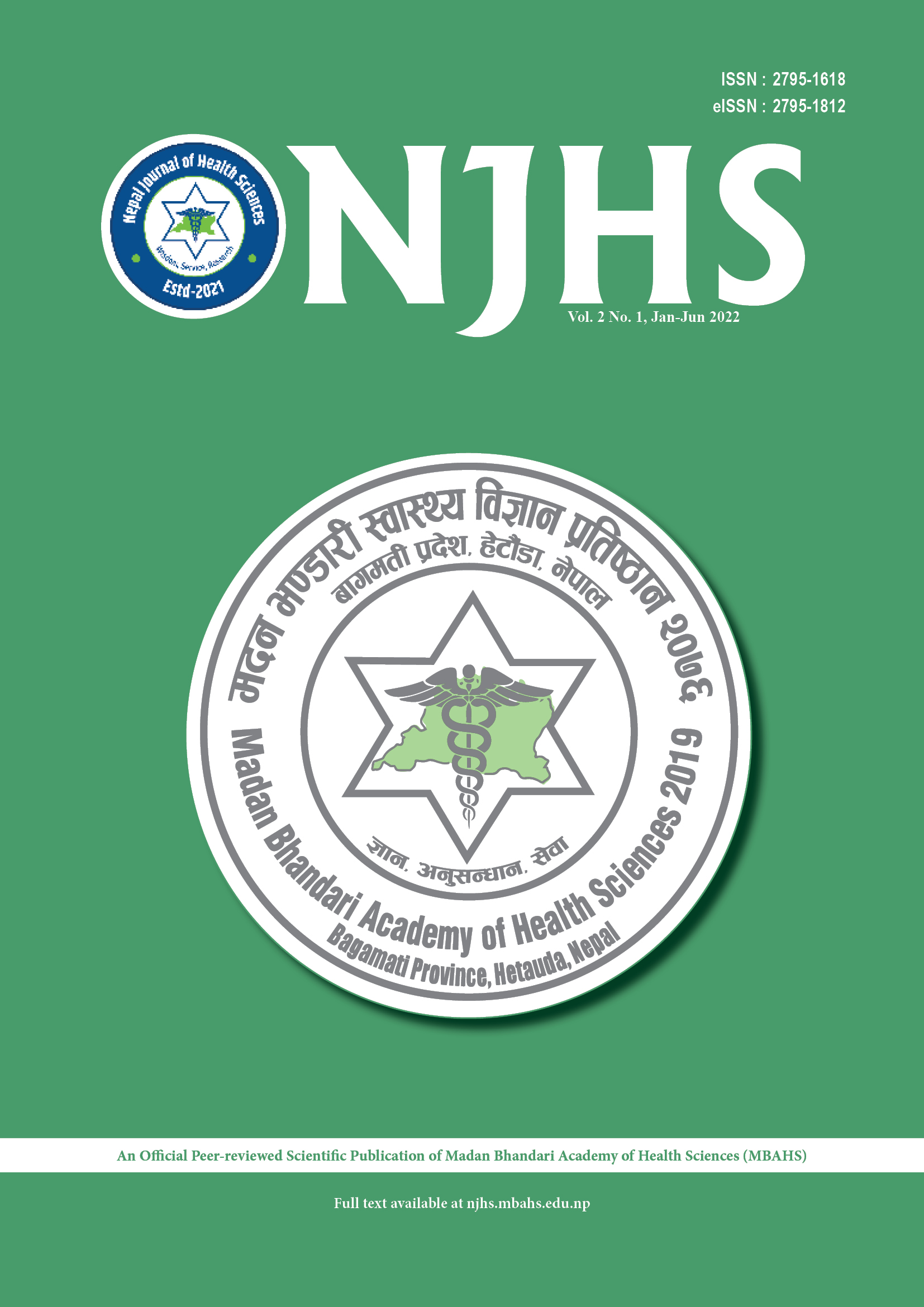Anatomical Risk Factors of Nerve Injuries Following Surgical Removal of Mandibular Third Molar
DOI:
https://doi.org/10.3126/njhs.v2i1.47165Keywords:
Impacted mandibular third molar, inferior alveolar nerve, lingual nerve, nerve injuryAbstract
Introduction: Surgical removal of the mandibular third molar has its own set of complications. The mandibular impacted teeth are in proximity to the Inferior Alveolar Nerve (IAN), Buccal Nerve, and Lingual Nerve (LN). Therefore, each of these nerves is always at risk of injury during extraction.
Objectives: This study was to evaluate the anatomical risk factors of nerve injury after the surgical extraction of mandibular third molars in patients visiting the department of oral and maxillofacial surgery of People’s Dental College and Hospital.
Methods: This prospective study was conducted with 315 participants who presented with a mandibular third molar impaction and underwent Intraoral Periapical Radiograph (IOPAr), panoramic radiograph, as well as Cone Beam, Computed Tomography (CBCT). CBCT was done in those patients in which the mandibular third molar was in close contact with the mandibular canal.
Results: Collected data from 315 patients showed that the incidence of Inferior alveolar nerve (IAN) and lingual nerve(LN)injury was 0.31%. Of which one had mesioangular class B, level II type of impaction in 17year male and the other had horizontal class C, level II type of impaction in 47year female respectively. In both cases, the tooth was lingually placed in relation to IAN.
Conclusions: Various factors are responsible for nerve injury after the removal of the mandibular third molar. In our study, the incidence of nerve injury to IAN and LN was comparatively low and the most common risk factor was angulation and anatomical position of the impacted mandibular third molar.





